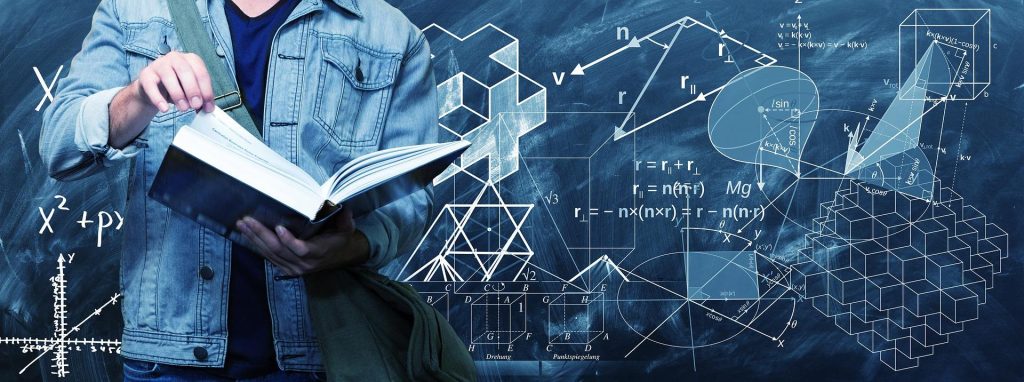The theory of multiple intelligences is a model proposed by Howard Gardner , a developmental psychologist, in his 1983 book “Frames of Mind: The Theory of Multiple Intelligences” , Gardner suggested that traditional notions of intelligence, such as IQ testing, were too limited. Instead, he proposed that human beings have multiple types of intelligences.
According to Gardner, an intelligence must fulfil several criteria , including: it should be capable of being isolated by brain damage ; it should have an evolutionary history and evolutionary plausibility ; it should have observable and measurable features ; and it should also have the potential to be manipulated and improved .
The theory of multiple intelligences can provide an interesting lens through which to examine the development of artificial intelligence.
From our partners:
Gardner initially defined seven types of intelligences in his theory.

1. Linguistic Intelligence:
The capacity to use language to express what is on your mind and to understand other people.
AI Perspective: Natural language processing (NLP) and generation (NLG) are direct examples of AI exhibiting linguistic intelligence. Systems like ChatGPT from OpenAI, or Google’s BERT/Bard, are designed to understand and generate human language in a way that is coherent and contextually appropriate.

2. Logical-mathematical Intelligence:
The capacity to understand the underlying principles of some kind of a causal system , the way a scientist or a logician does; or can manipulate numbers , quantities , and operations , the way a mathematician does.
AI Perspective: Many AI systems, especially those built for specific tasks like playing chess (like Deep Blue) or Go (like AlphaGo), exhibit this form of intelligence. They use logic and mathematical models to make decisions, predict outcomes, and solve problems.

3. Musical Intelligence:
The capacity to think in music , to be able to hear patterns , recognize them, remember them, and perhaps manipulate them.
AI Perspective: AI is being used in the field of music for composition, understanding music, and even improvising in real-time with human musicians. OpenAI’s MuseNet is an AI that can generate 4-minute musical compositions with 10 different instruments and can combine styles from country to Mozart to the Beatles.

4. Spatial Intelligence:
The ability to represent the spatial world internally in your mind, as a sailor, an aeroplane pilot, or a chess player does.
AI Perspective: AI technologies such as computer vision algorithms used in self-driving cars, or drones for spatial navigation, are great examples of spatial intelligence. They interpret, understand, and navigate complex visual environments.

5. Bodily-Kinesthetic Intelligence:
The capacity to use your whole body or parts of your body (like your hand or your mouth) to solve a problem , make something, or put on some kind of a production.
AI Perspective: Robotic systems, especially those designed to navigate the physical world or collaborate with humans in physical tasks, demonstrate this form of intelligence.

6. Interpersonal Intelligence:
The ability to understand other people , what motivates them, how they work, how to work cooperatively with them.
AI Perspective: While AI systems cannot understand human emotions and motivations in the same way humans do, there are attempts to build empathic AI that can interpret and respond appropriately to human emotions. This is especially relevant in the field of AI chatbots, customer service AI, and affective computing.

7. Intrapersonal Intelligence:
Having an understanding of yourself , of knowing who you are, what you can do, what you want to do, how you react to things, which things to avoid, and which things to gravitate toward.
AI Perspective: AI does not have self-awareness or personal desires. However, the concept of meta-learning in AI, where an AI system learns how to learn, might be a small step towards this kind of intelligence.
Later, Gardner suggested that there may be additional intelligences, such as Naturalistic Intelligence (observing, understanding, and organising patterns in the natural environment), Existential Intelligence (capacity to tackle deep questions about human existence), and Pedagogical Intelligence (understanding how to teach according to individual needs and abilities).
It is important to note that the theory of multiple intelligences is not universally accepted, with some critics suggesting that these “intelligences” are more accurately described as individual talents or abilities. However, the theory has been influential in education, providing a framework for thinking about how to best teach students with varying types of strengths and interests.
For enquiries, product placements, sponsorships, and collaborations, connect with us at hello@zedista.com. We'd love to hear from you!
Our humans need coffee too! Your support is highly appreciated, thank you!

